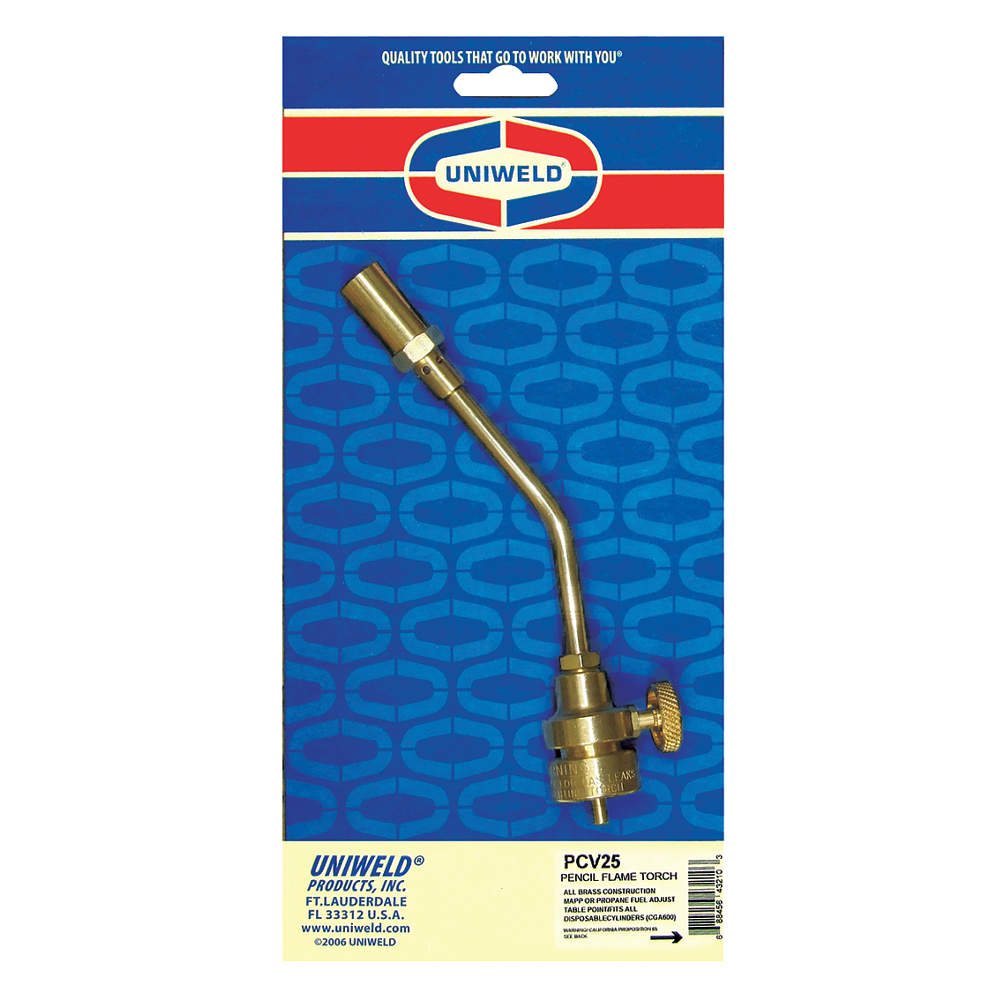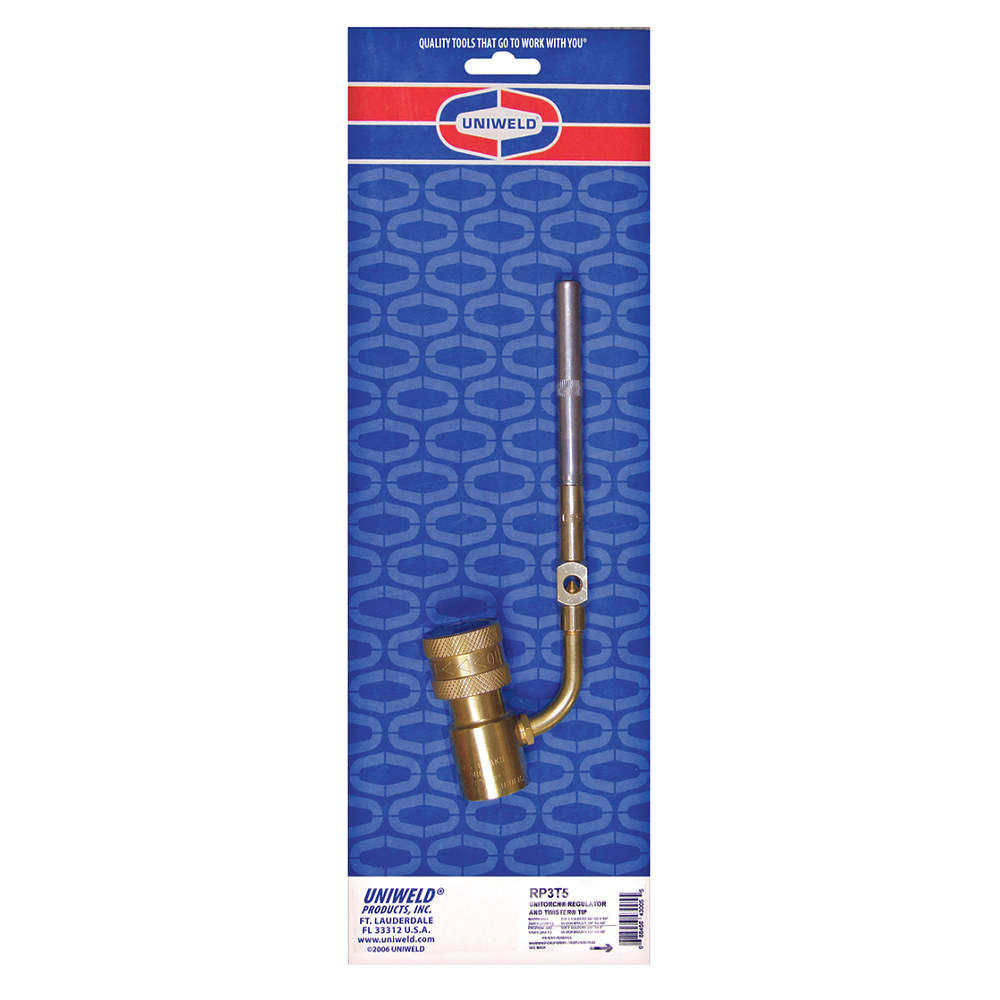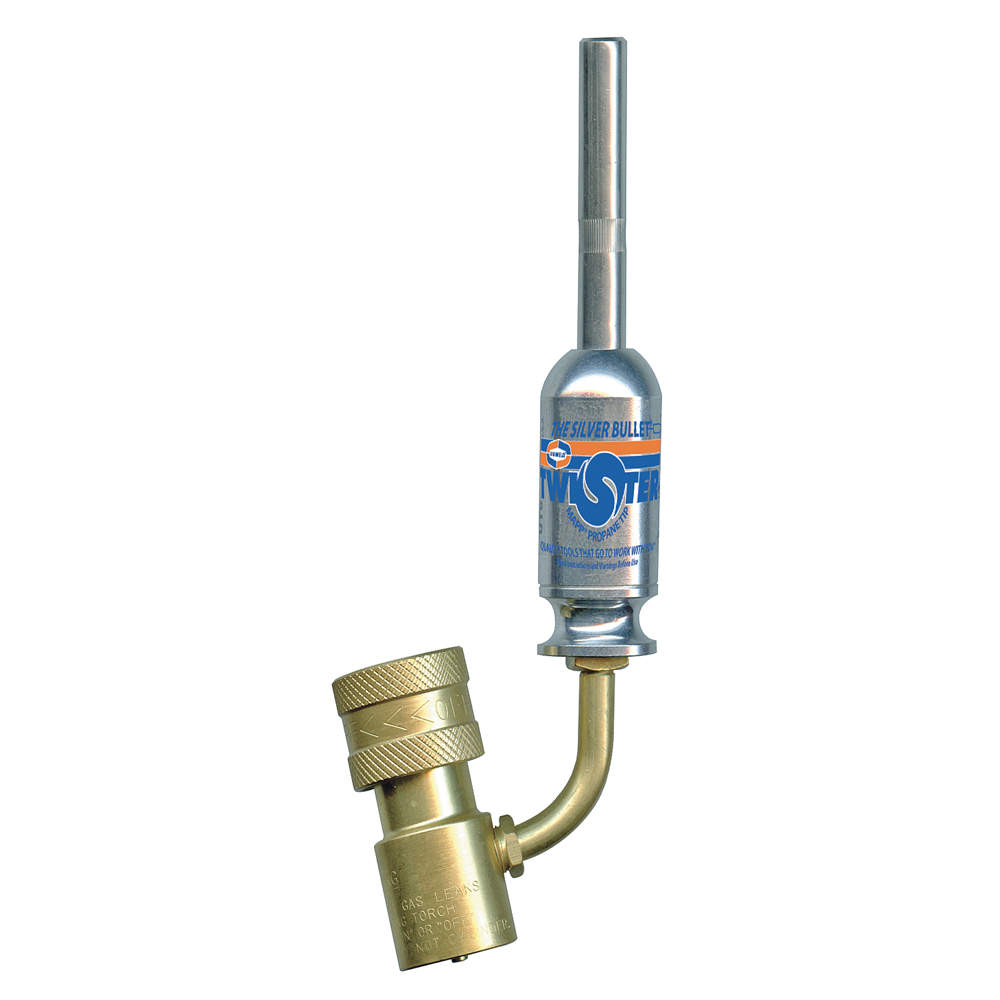Torch
Gas welding equipment, also known as oxy-fuel or oxyacetylene welding equipment, is suitable for cutting or joining together a wide variety of metallic workpieces. Gas welding equipment / torches use oxygen and fuel gases for operating, unlike electric arc welding equipment that needs electrical power to operate.
Brazing and soldering torches draw fuel & oxygen from their gas cylinders to produce flame and melt an applied filler material (solder) between two workpieces to form a joint. Brazing torches are ideal for creating stronger joints than soldering joints, but they require higher operating temperatures. Soldering torches, on the other hand, are ideal for joining heat-sensitive materials as they operate at lower temperatures than brazing torches. These torch kits include a torch, fittings and accessories for performing brazing and soldering.
Uniweld hand torches provide exact flame positioning required in confined space plumbing, HVAC/R and automotive operations. These lightweight and portable Uniweld torches are generally used to solder copper tubing, strip paints and thaw frozen pipes by connecting to a pressurised supply of fuel gases such as propane and propylene (not included). They are equipped with an LP Twister Tip having swirl combustion technology for producing a high energy flame. These Uniweld hand torches are available in self and manual ignitor variants.
Uses
Brazing is used to make stronger joints than those made via soldering. These Uniweld torches are ideal for high temperatures or pressures, such as fire extinguisher systems or high-pressure cooling lines in air conditioning systems.
Frequently Asked Questions
What are the types of brazing processes?
The four main types of brazing heating methods are torch / manual brazing, resistance brazing, induction brazing and vacuum brazing.
What are brazing and soldering?
Brazing is the process of joining two metals by heating & melting the alloy bonded between the two metal pieces. Soldering is similar to brazing, but takes place at a lower temperature. According to the American Welding Society's definition, soldering takes place with fillers (also known as solders) that get melted below 840 degrees F (450 degrees C).
Where do we use brazing?
Brazing is used in the tool industry for joining two dissimilar metal parts and can be applied to a wide range of materials, such as copper, brass, aluminium, stainless steel and ceramics.
What are the advantages of brazing?
The advantages of brazing include a lower processing temperature & power input than welding and producing joints with minimum residual stress & thermal distortion as compared to welding. Brazing does not require post-processing heat treatment.
Why is brazing better than welding?
Unlike welding, brazing does not melt base metals. It also allows tighter control and produces a cleaner joint than welding. It also features less thermal distortion than welding and does not require secondary finishing.
What are the advantages of soldering?
Soldering does not melt the base metal and can join any metal or non-metal. It requires low power and can be carried out at low temperatures.
 S$ SGDChange Country
S$ SGDChange Country

